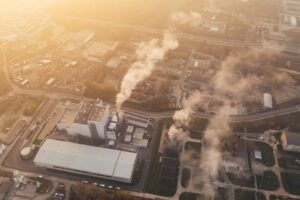APPLICATIONS OF TECHNOLOGY:
- Integration into (photo)-electrochemical devices for improved efficiency
- Storage of solar energy as fuel and valuable chemicals
- Production of carbon-neutral plastics when connected to an ethylene polymerization reactor
BENEFITS:
- Higher CO2 conversion rates without dropping gas flow rate through the system
- Concentrated CO2 reduction products
- High purity hydrogen byproduct
BACKGROUND:
(Photo)-electrochemical reduction is a promising technology for reducing atmospheric CO2 levels while simultaneously producing valuable fuels and chemicals. However, current systems usually produce low purity outlet streams with large portions of unreacted CO2. Additionally, hydrogen (H2), which is often a byproduct in these systems, can impede CO2 reduction in a looped system if H2 levels surpass a certain threshold value. Improvements to (photo)-electrochemical CO2 reduction systems which increase product concentrations to industrially relevant values is key to commercializing these technologies.
TECHNOLOGY OVERVIEW:
Scientists at Berkeley Lab have developed a system for photo-electrochemical CO2 reduction that recycles the unreacted CO2 in the outlet stream together with the products and flows them back into the CO2 reduction reactor, enabling much higher CO2 conversion rates without dropping the gas flow rate. In this looped system, an electrochemical hydrogen pump is put in series with the CO2 reactor which removes all the H2 from the recycled gas stream. Therefore, the H2 byproduct does not impede CO2 reduction. In addition, the high purity H2 can be sold as a separate product.
Initial results with a CO2 reactor targeting ethylene as the main product show that ethylene concentrations of at least 10% can be achieved, which is roughly 10-20 times higher compared to a single-pass system. This system can, in principle, work for producing any target gas product from CO2 (or N2).
DEVELOPMENT STAGE:
Laboratory scale
PRINCIPAL INVESTIGATORS:
Tobias Kistler
Peter Agbo
IP Status:
Patent pending
OPPORTUNITIES:
Available for licensing or collaborative research

